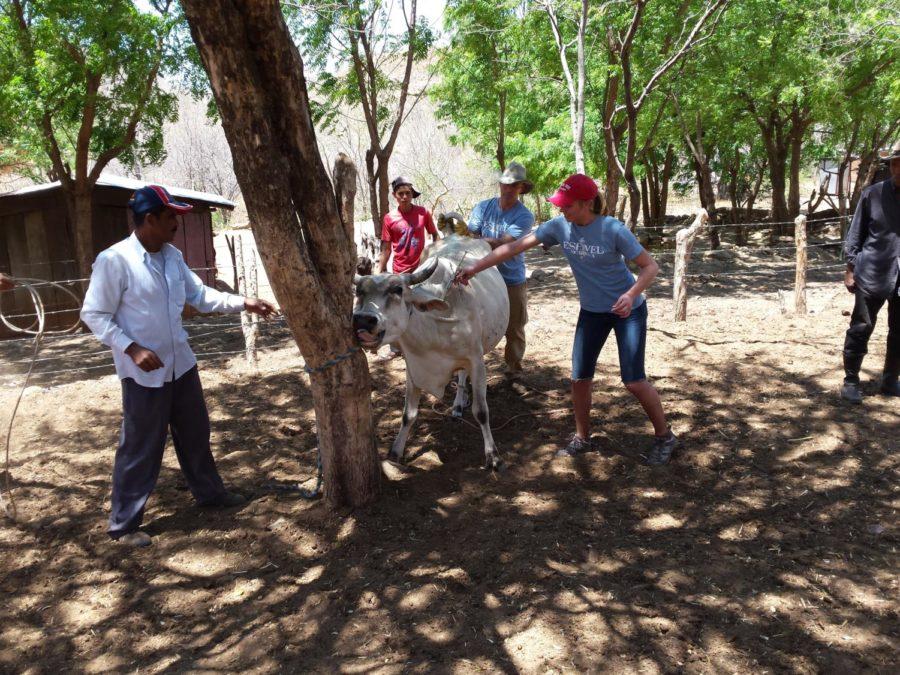Students help animals on Nicaragua mission trip
April 23, 2015
During Spring Break, five ISU students traveled to Nicaragua to try and save hundreds of lives, one livestock animal at a time.
“You’d run up and give them the shot and then run away before they got you with their horns or beaks,” said Marjorie Clark, third-year veterinary medicine student.
Clark was joined by Taylor Petersen, Destinee Horning, Erica Voris and Nicole Hershberger for their annual missionary trip to Nicaragua as part of the Christian Veterinary Fellowship. During the trip, the group travels from village to village, performing all manner of veterinary services to the local farmers’ livestock.
“Everyone seemed to want our help when we offered it,” Horning, first-year veterinary student, said. “One guy wanted us to treat his squirrel.”
The group was joined by Oscar and Tammy Gaitan, local Nicaraguan missionaries. The Gaitans travel from village to village, spreading the message of the Bible. Clark said the Gaitans see their veterinary work as a great way of getting a foot in the door to build relationships with people who don’t know Christianity.
“Maybe someone had a bad experience with a Christian. We can heal those wounds by showing we want to help them and their animals,” Clark said.
However, Horning said the Gaitans’ method of converting people to Christianity is not the intrusive practice that many people see it as. Instead, the Gaitans focus on building personal relationships and hope a curiosity of Christianity comes out of this naturally, which for them can take years.
“They’re looking for one household to invite them into that community, and then they build the relationships from there,” Petersen, second-year veterinary medicine student, said.
For this trip, the group was required to live in many of these villages for several days. Clark said there was a fair amount of adjusting the group had to do to fit to the Nicaraguan lifestyle, even when the locals tried to accommodate them.
“They eat a lot of rice and beans — a lot of carbs. They knew that we ate meat, so they tried to accommodate us by cooking a chicken,” Clark said. “When they told us they were cooking the chicken, they meant the whole chicken, with just the head cut off.”
The Nicaraguans themselves also portrayed a very different approach to life than the group was used to, Horning said.
“People just went wherever and cows just went wherever,” Horning said. “It’s a very unified community.”
Along with this lifestyle, the group was also introduced to the local Nicaraguan’s practices to cure their livestock of disease. One method involved snapping off a horse’s nerve with a wooden stick in order to cure a parasitic disease.
“One of the things they did was rub motor oil on the cow’s uterus,” Petersen said. “We had a hard time understanding their methods.”
Because of this, the group focused on supplying the Nicaraguans with information, so they could give their livestock the proper care.
“We wanted to leave them with information they could use,” Petersen said. “If we don’t do that, then nothing really changes.”
Through this, Clark said, the group formed a relationship with the villagers, just as the Gaitans wanted.
“Even though they didn’t know English and we didn’t know Spanish, by the end, the boys were hanging on us and wanted to play,” Clark said.

















